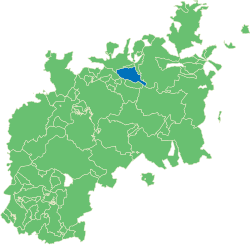Difference between revisions of "Cleeve Hundred"
(Created page with "'''Cleeve Hundred''' is one of the hundreds of Gloucestershire. It comprises the ancient parish of Bishop's Cleeve. Cleeve was named in 1327 as a distinct hundred...") |
|||
| Line 1: | Line 1: | ||
| + | [[File:Cleeve Hundred - Gloucestershire.svg|thumb|250px|Cleeve Hundred in Gloucestershire]] | ||
'''Cleeve Hundred''' is one of the [[hundred]]s of [[Gloucestershire]]. It comprises the ancient parish of [[Bishop's Cleeve]]. | '''Cleeve Hundred''' is one of the [[hundred]]s of [[Gloucestershire]]. It comprises the ancient parish of [[Bishop's Cleeve]]. | ||
Latest revision as of 14:39, 1 April 2019
Cleeve Hundred is one of the hundreds of Gloucestershire. It comprises the ancient parish of Bishop's Cleeve.
Cleeve was named in 1327 as a distinct hundred, comprising the townships of Cleeve, Brockhampton, Cockbury and Wontley, Gotherington, Southam, Stoke Orchard, and Woodmancote. Earlier, Cleeve had formed part of Tibblestone hundred, and became separated because of the extensive liberties which the Bishop of Worcester exercised in his manor of Cleeve.[1]
References
- ↑ "The Hundred of Cleeve - British History Online". Victoria County History. 1968. https://www.british-history.ac.uk/vch/glos/vol8/p1.
| Hundreds of Gloucestershire |
|---|
|
Barton Regis (including Bristol) • Berkeley • Bisley • Bledisloe • Botloe • Bradley • Brightwells Barrow • Cheltenham • Cleeve • Crowthorne and Minety (including Cirencester) • Deerhurst • Duchy of Lancaster • Dudstone and King's Barton (including Gloucester) • Grumbald's Ash • Henbury • Kiftsgate • Langley and Swineshead • Longtree • Pucklechurch • Rapsgate • St Briavels • Slaughter • Tewkesbury • Thornbury • Tibaldstone • Westbury • Westminster • Whitstone |
